Mark Anthony Neal's Blog, page 1054
October 7, 2011
Diane Ravitch Unplugged @ Duke University
Duke's Program in Education and Durham Public Schools join to bring Diane Ravitch to campus and Durham schools. http://today.duke.edu/2011/10/ravitich
Published on October 07, 2011 08:41
Not a Question of Courage: Anti-Black Racism and the Politics of the NBA Lockout
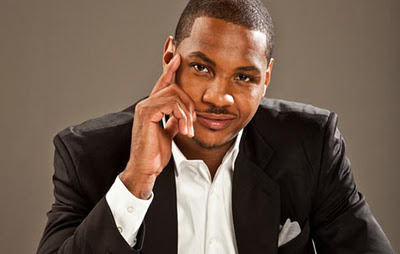
Not a Question of Courage: Anti-BlackRacism and the Politics of the NBA LockoutbyDavid J. Leonard
Followingan exhibition game in Philadelphia, MichaelTillery asked the following of Carmelo Anthony:
MichaelTillery: Carmelo I don't know if anyone asked you this but the fans are wonderingwhy there isn't such of a…NBA presence…NBA players coming out and speaking onthis issue (NBA lockout) publicly like in the NFL…like in other situations.
CarmeloAnthony: "We're not allowed. We're not allowed. I mean everybody has their ownopinion…you hear people talk here and there…but nobody don't really come outand say what they really want to say. That's just the society we live in. Athletestoday are scared to make Muhammad Ali type statements."
Notsurprisingly, his comments have led to questions about today's NBA players,their resolve, their commitment, heart, and courage. For example, one blogger offeredthe following: "What does Carmelo mean by "we're not allowed"? Who'sstopping them? Is Carmelo right? Do you think athletes are punks in the modernera as opposed to the way Muhammad Ali stuck his neck out for Vietnam? Maybethese guys should just man up and make changes!" Kelly Dwyerwas similarly dismissive, questioning Anthony's reference to Ali:
Oh, Carmelo.He's not lying. He's not wrong. But comparing Ali's stand against a conflict inSoutheastern Asia that had gone terribly wrong to a discussion over the sharingof actual billions of dollars in Basketball Related Income is the absoluteheight of absurdity. Yes, athletes today are scared to make Muhammad Ali-typestatements (as is the case with most people that want to keep their jobs), butthe application of an anecdote like that to a situation like the NBA lockout iscompletely and utterly wrong.
Whilefolks in the blogosphere used Melo's comments to incite division and tochastise the union for silencing its members, it would seem that his commentsdemonstrate the ways that race impacts the lockout while illustrating the potentialefforts from the union to manage and mediate the racially based contempt facedby NBA players. As Michael Tillerytold me, "The NBA more than any other pro league seems to have an image problembased more on race than anything. You could say the league is more popular whena white player is doing superstar things." As such, you cannot understand these comments outside alarger of this large racial landscape.
Tounderstand Carmelo Anthony's comments require a larger context. His comments (and the lockout itself)are very much tied to the larger history of the NBA and race. For example, in wake of the PalaceBrawl, the NBA implemented a series of draconian policies that sought to bothappease white fans and corporate sponsors who were increasingly uncomfortablewith its racial optics, all while disciplining the players to comply and embodya different sort of blackness. Accordingto Michael Tillery, the brilliant commentator, "Since the Brawl and even goingback to Kermit Washington's punch of Rudy Tomjonovich, a case could be madethat any outspoken player in any regard is influenced to be silenced simply toprotect the NBA brand because of an apparent race disconnect."
Theowner's intransigent position and demands for a hard cap (although at the timeof writing the owners appear to have softened on this position, at least at asurface level), major reduction in player access to league revenues, and amyriad of others positions all seem to reflect a sense of leverage. In other words, the owners seem to betrying to capitalize on the contempt and animosity that has long plagued NBAplayers, a fact worsened by the assault on blackness that followed the PalaceBrawl. In a brilliantinterview with Michael Tillery, Ron Artest reflects on the publicperception and demonization of NBA players that reflects larger racial animusand ideology: "The NBA is not a thug league. There's a couple of players thatgrew up similar to rappers who have grown up. What are they going to lynch usfor that too? It's not our fault that we grew up that way. We are talented andsmart."
Thelockout represents an attempt to capitalize on the perception of NBA players asthugs, as criminals, as greedy, and undeserving anti-role models. It appears to be an effort to convertthe leverage and power that comes from the narrative and ideologicalassumptions so often linked to black players into greater financial power forthe league's owners.
Inthinking about Melo's comments and the overall reticence of players to speakabout the current labor situation leaves me thinking that this is a concertedstrategy to combat the advantages that the owners possess (the NBA version of asouthern strategy). The union ismost certainly trying to correct the public relations difficulties that facedin 1998 (and throughout its history), obstacles that emanate from America'sracial landscape.
Duringthe last NBA lockout, KennyAnderson, then a point guard with the Boston Celtics, generated quite a bitof backlash when he announced, "'I was thinking about selling one of my cars, Idon't need all of them. You know, just get rid of the Mercedes.'' Fulfilling people's stereotypes aboutrich and entitled black athletes, Anderson's comments generated little sympathyfrom fans, amplifying growing resentment toward the NBA's primarily blackpopulace. Mike Wise,seemingly mocking, Anderson penned the following:
Two months after theNational Basketball Association's lockout came and his paycheck went, KennyAnderson began contemplating the unthinkable. It had nothing to do with askinghis mother in Queens for his old room back or taking a part-time security job;he figured there were only so many indignities young millionaires should haveto face.
But with his penchant forbuying what he wanted and his accountant having to borrow against his stocks tokeep investing, Anderson realized it might be time to do without. Sort of. . ..
Extravagant and expensivetastes have been a hallmark of young millionaire athletes. But without gamesand paychecks, N.B.A. players are about to learn the frugal side of livinglarge. How long many of them can cope without a biweekly salary may mean thedifference in their economic game of chicken with the owners.
Similarly,Patrick Ewing, then union president, describedthe players' predicament in the following way: "If you look at people whoplay professional sports, not a lot of them are financially secure. They make alot of money, and they also spend a lot of money." Alonzo Mourning did the unthinkable during the 1998 lockout:he talked about race. "I thinkthere is a perception from the owners to even some fans that we're blacks whoshould be happy with what we've got, fair or not," he argued."There's a lack of respect given us in large part because we're athletes.I'm not saying it's all about race because it's not. But it plays afactor." Such statements didnot merely turn public opinion to the owners, but did so because the commentswere interpreted through dominant white racial frames, undermining playerleverage.
Sowhen Alonzo Mourning "inserted" race into the discussion, noting the existenceof double standards and how race overdetermined media coverage, faninterpretations, and labor strife itself, the backlash was extensive. The NBA lockout, at one level, wasabout an increasingly level of fan animus directed toward the league'sprimarily black players, much of which reflected the insertion of race into thediscussion. At another level, the1998 lockout was about player divisions. Armen Keteyian, Harvey Araton and Martin Dardis in Money Players, describethe ways in which race, union divisions, and public perceptions impacted the1998 lockout:
As for theplayers, Salley said they had let the NBA and the agents divide them into warringfactions the public perceived as they haves against the have nots. They came off looking, he said like 'houseNegroes and field Negroes.'Salley knewenough American history to understand this wasn't the first something like thishad occurred
'Blacks inthis country have always been divided and it never did us any good,' he said. 'TheNBA is a very black league, so we must be careful of the message we send.'
In effect,Salley's message was that no matter how successful it became, how big it got, 1970sracial perceptions would never go away for a predominantly black league sellingto a white corporate crowd.
Salley, hemay have been right, judging by the media's general response to the summer of laborstrife. After at leastacknowledging baseball and hockey players had the right to fight for their bestdeal, many sports journalists more or less rolled their eyes and advised thebasketball players to be happy with whatever they got. Stern was help up as the sports shiningknight. Jordan, as if he neededthe money, was cast as a greedy infidel. One national sports commentator referred on television to Jordan'sinvolvement as the 'equivalent of a drive by shooting.'
That evenbrought out the less polished, 1960s liberal in Stern. 'Fuck thepeople who say that Michael was being greedy, that he should just shut up and play,'Stern said. 'That's just code."
Inan effort to avoid the public divisions and to avoid the blowback from a mediaready to pounce on any NBA players who inserts race or merely expresses acritical perspective, it seems the players and the union have gone to greatlengths to disarm a previous source of leverage for the owners. This is most certainly evident in therelative silence from the players themselves (minus Derek Fisher who mostcertainly cannot be depicted as a hip-hop baller and part of culture ofextravagance, both of which are common narratives attached to the NBA's blackplayers). It is also evident inthe rhetoric seen from players when talking about playing overseas. It is never about the money but insteadthe love of the game; likewise, the efforts to highlight player participationin summer leagues where the love of the game is on full display, works toundercut the stereotype of the greedy black NBA player that was so prominent tothe 1998 NBA lockout.
CarmeloAnthony wasn't calling players for a lack of courage but rather commenting onthe cultural politics of the NBA and the ways in which both the league and itsfans demand silence from its player, a fact that reflects new racism atworse. Be visible, play, and evenmake money but don't dare speak about injustices, inequalities, or theconditions of labor. In other words, "shut up and play."
***
David J. Leonard is Associate Professor in theDepartment of Critical Culture, Gender and Race Studies at Washington StateUniversity, Pullman. He is the author of ScreensFade to Black: Contemporary African American Cinema and the forthcoming After Artest: Race and the War on Hoop(SUNY Press). Leonard is a regular contributor to NewBlackMan and blogs @ No Tsuris.
Published on October 07, 2011 06:38
October 5, 2011
Video: 9th Wonder: "Make It Big"
9TH WONDER - MAKE IT BIG from Pricefilms on Vimeo.
Make It Big
9th Wonder (ft. 9thmatic)
Directed by Kenneth Price
IWWMG / Jamla Records
2011
The Wonder Years in Stores Now!
Featuring: Phonte, Warren G, Murs, Kendrick Lamar, Fashawn, Talib Kweli, Marsha Ambrosius, Terrace Martin, Raekwon, Erykah Badu, Mac Miller & More.
To bring The Wonder Year to your city visit:
thewonderyear.l-r-g.com/
twitter.com/9thwondermusic
twitter.com/pricefilms
twitter.com/jamlarecords
Published on October 05, 2011 20:21
Pink Ribbons, Black Bruises
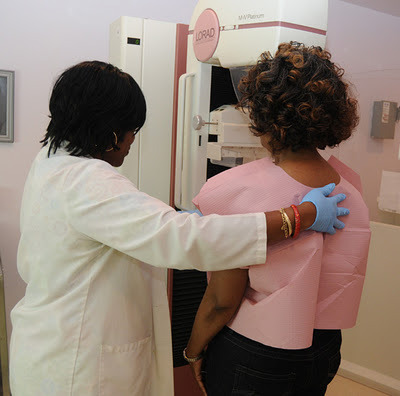
Pink Ribbons, Black BruisesbyMark Anthony Neal | NewBlackMan
Octoberis both BreastCancer Awareness Month as well as Domestic Abuse Awareness Month and, onthe surface, the two seem to have little in common except concern for thequality of women's lives. Most men understand that breast cancer and domesticviolence represent forms of crisis in the lives of black women, but I'd like tosuggest that our dismissive attitude towards women's health care issuesrepresent a form of abuse itself.
Accordingto the Chicago Foundation forWomen "violence against women and girls is a cradle-to-graveepidemic." The Institute on DomesticViolence in the African-American Community at the University of Minnesotafound that black women were 30 percent more likely to be subject to domesticviolence than white women and 250 percent more likely to be the subject of suchviolence than men. Additionally, black women account for more than 20 percentof the homicides associated with domestic violence despite only representing 8percent of the national population.
Thankfully,there is now a generation of men, including activists and educators like Jackson Katz, Quentin Walcott, directorof the CONNECT's Community Empowerment Program in NewYork, Ulester Douglass of Men Stopping Violence inGeorgia and filmmaker Byron Hurt whoare providing leadership in getting men of all races to understand theircomplicity in violence against women. It is still a struggle to get men tospeak out against violence against women, but the aforementioned men representtremendous growth in that regard.
Thanksto organizations like Susan G. Komen for theCure, the foundation behind the pink ribbons and wrist bands so prominentlyfeatured during Breast Cancer Awareness Month, society is beginning to grapplewith the disproportionate effect of the disease on black women, who, while lesslikely to get the disease than their white peers, are far more likely to diefrom it. Indeed it is hearteningto see professional sports leagues like the NFL and Major League Baseballcontribute to awareness efforts.
Thereare lots of reasons for the discrepancies between black and white women, butI'd like to highlight the roles that black women play as caretakers andnurturers in our communities. Also, black women are seemingly more willing toaddress the high incidence of hypertension and prostate disease among blackmen, often at the expense of addressing their own health issues.
Ironically,few black men seem to take the same interest in black women's health concerns,or their own health issues for that matter. Men have been socialized to thinkof diseases like breast cancer, fibroids and osteoporosis, as simply examplesof "women's diseases." Some men are likely to dismiss diseases thatdisproportionately affect women, because they were told as boys that it was"mommy's time of the month," distancing them from women's healthissues. Nevertheless, black men must take greater responsibility in increasingtheir awareness of diseases that afflict their mothers, sisters, daughters,wives and friends.
Forexample, somestudies have shown that 80 percent of all black women suffer from some formof fibroid disease, yet most black men are oblivious to the effects of thedisease. Could you imagine a disease that afflicted 80 percent of black menthat black women would be largely ignorant of?
Inmany ways our willing ignorance about black women's health issues represents aform of abuse. As healthcare issues remain critical to black America, it isincumbent on black men to get serious about finding out about the diseases thataffect the women and men in our communities.
Published on October 05, 2011 13:43
The REAL Affirmative Action Bake Sale
 October 4, 2011
October 4, 2011FOR IMMEDIATE RELEASE
The REAL Affirmative Action Bake Sale
Sponsored by the Affirmative Action Senior Seminar, Fall 2011, Fordham University
When: October 7, 2011, 11 AM to 3 PM
Where: McGinley Center Lobby, Fordham University
To: Fordham Students, Faculty, Administrators, Representatives of the Media
On Friday, October 7, 2011, Fordham University's Senior Values Affirmative Action class will host a REAL Affirmative Action Bake Sale held at the Rose Hill campus' McGinley Center. This is in response to the UC Berkeley's bake sale, which did not factually represent the breakdown of affirmative action. The Berkeley sale showed underrepresented minorities and women to be the primary beneficiaries in college admissions. The Fordham students, in conjunction with the University's Jesuit Tradition, hope to raise awareness on the realities of preferential treatment in college admissions with corresponding bake sale pricing. The prices are as follows:
Women (General Admission) $1.30
Men (General Admission) $1.25
Underrepresented Minorities $1.00
Legacies $1.00
Recruited Athletes $.50
Children of The Very Wealthy $.25
This project was undertaken under the guidance of Dr. Mark Naison, Professor of African American Studies and History, Principal Investigator, Bronx African American History Project. All Donations Go to P.O.T.S. Soup Kitchen.
For Further Information, Please Contact:
Thomas Gill - (201) 919-5134 – gilman110@gmail.com
Angel Melendez - (617) 304-0317 – amelendez@fordham.edu
For Access to Campus (for Media) Contact Bob Howe at Howe@Fordham.Edu
Published on October 05, 2011 12:44
'Left of Black' S2:E4 w/ Julie Dash & Lizz Wright
Left of Black S2:E4w/Julie Dash & Lizz WrightOctober3, 2011
Filmmaker Julie Dash joinshost and Duke University Professor Mark Anthony Neal on Leftof Black . This year marks the 20th Anniversary of the releaseof Dash's ground-breaking film Daughtersof the Dust which was the first feature by anAfrican-American woman to gain national theatrical release. The filmdraws on Dash's South Carolina heritage and focuses on three generations ofwomen with roots in the Sea Islands and Gullah culture. Dash discusses how shebecame a filmmaker and the challenges she faced along the way. Dash alsoreveals her surprising view of filmmaker Tyler Perry.
In the second segment, musical artist andvocalist Lizz Wright joins Neal. The Georgia born singer discusses how her family's tradition in storytellinginspired her career as a vocalist. Wright, whose music is difficult toplace in one genre, talks about incorporating religion into her music as well. Wright also identifies the musicians who influenced her and the inspiration heralbum artwork. Finally Wright explains how she's maintained control ofher music. Wright has released four full-length recordings,including the recent Fellowship. She performs at Duke University's ReynoldsIndustries Theater on October 7th.
***
Left of Black is a weekly Webcasthosted by Mark Anthony Neal and produced in collaboration with the John Hope Franklin Center at Duke University.
***
Episodesof Left of Black are also available for download @ iTunes U
Published on October 05, 2011 04:34
October 3, 2011
Context and Consequences: The Hill-Thomas Hearings Twenty Years Later
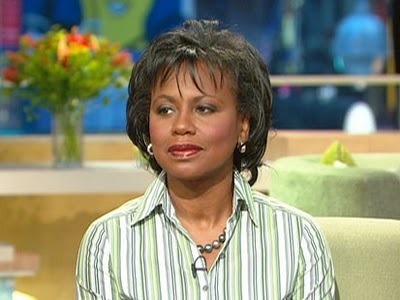
WHAT: Contextand Consequences: The Hill-Thomas Hearings Twenty Years Later WHEN: Thursday,October 6, 2011, 9:00 a.m - 5:30 p.m.
WHERE: Georgetown University Law Center
Hart Auditorium - McDonough Hall 600 New Jersey Avenue, NWWashington,D.C. 20001
SCHEDULE:
9:00- 9:30 a.m. Welcome and Opening Remarks WilliamTreanor, Dean, Georgetown University Law CenterEmmaColeman Jordan, Professor, Georgetown UniversityLaw CenterBeverly Guy-Sheftall,Professor, Spelman College
9:30- 10:30 a.m. Context: Race and Political Representation CharlesOgletree, Professor, Harvard Law School (Interviewer) Carole Simpson, Leaderin Residence, Emerson College; former Anchor, ABC News
10:45a.m. - 12:00 p.m. Consequences: The Burden of History in a Post-Race Era PaulButler, Professor, George WashingtonUniversity Law School AngelaJ. Davis, Professor, American UniversityWashington College of Law ElvinWyly, Professor, University of BritishColumbiaEmma Coleman Jordan, Professor,Georgetown University Law Center (Moderator)
12:00- 12:45 p.m. History Repeating? Gender vs. Race in the 2008 DemocraticPrimary MarkAnthony Neal, Professor, Duke UniversityAmyRichards, Co-founder, Soapbox, Inc.Beverly Guy-Sheftall,Professor, Spelman College (Moderator)
2:15- 3:15 p.m. Context: Women, Leadership, and the Politics of Gender MichelMartin, Host, "Tell Me More," NPR (Interviewer) Sen. Barbara Mikulski(D-Md.), (Invited)
3:30- 4:45 p.m. Consequences: 21st Century Women Parity in Public Life andin the Workplace EvelynNakano Glenn, Professor, University ofCalifornia, BerkeleyDel.Eleanor Holmes Norton, (D-DC), Professor,Georgetown University Law CenterVickiSchultz, Professor, Yale Law SchoolKim Taylor-Thompson, Professor,New York University School of Law (Moderator)
4:45- 5:00 p.m. Closing Anita Hill, Professor,Brandeis University; Of Counsel, Cohen Milstein Sellers & Toll PLLC
NOTE: Thisconference marks the twentieth anniversary of the Anita Hill-Clarence Thomashearings. The participants willdiscuss issues of race, gender and authority in American society. Media interested inattending should email mediarelations@law.georgetown.edu.Ifyou are not a member of the news media and would like to attend, pleasecomplete the registrationform.
Published on October 03, 2011 14:38
The Wall Street Occupations and the Making of a Global Counter Culture
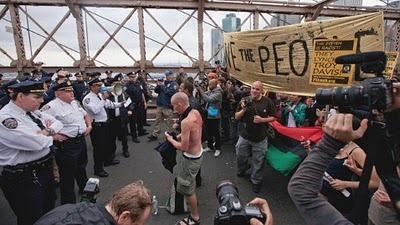
The Wall Street Occupationsand the Making of a Global Counter CulturebyMark Naison | special to NewBlackMan
Yesterday,I spent about an hour in Liberty Plaza sitting, walking around and talking topeople before the event I had come for—a Grade In organized by teacheractivists- finally began, and was stunned by how different the occupation wasfrom any demonstration I had attended recently.
Firstof all, in contrast to the last two protests I had participated in– a Wisconsin Solidarity rally at City Hall, and the Save Our Schools March onWashington—I saw few people my own age and no one I recognized—at least until the "Grade In"started. When I arrived, at 11 AM, most of the people in Liberty Plazawere the ones who had slept their overnight, and the vast majority were in their 20s and 30s—a half to a third my age. They were drumming,sweeping the sidewalk, talking to curious visitors—whom were still few in number—eating orchilling with one another and their relaxed demeanor blew me away given thetumultuous events of the day before when more than 700 protesters had beenarrested by the NYPD after marching onto the Brooklyn Bridge.
Theywere also, to my surprise, thoroughly international. Many of the people I metat the information desk, or who spontaneously started conversations with me,had accents which indicated they had been born in, or had recently come from,countries outside the United States. I felt like I was in Berlin orBarcelona, where you could always count on meeting young people from all overthe world at any music performance or cultural event, only this was a politicalaction in the heart of New York's financial district. I felt like Iwas in the midst of a global youth community I had certainly seen emergingduring my travels and teaching—after all, I had helped organize a "Bronx Berlin Youth Exchange"—but I had not expected to see at thisparticular protest. But it was there, no doubt. And definitely made the discipline,determination and camaraderie of the protesters that more impressive.
Butas much as the age cohort and global character of the occupation seemedstrange, it also seemed oddly familiar, though it took a while for thatfamiliarity to sink in. The longer I stayed at Liberty Plaza, the more itfelt like the countercultural communities I had spent time in during the late1960s, from Maine to Madison to Portland Oregon, where discontent with war anda corrupt social system had bred a communal spirit marked by incrediblegenerosity and openness to strangers. During the years when Itraveled the country regularly as a political organizer and revolutionary—1968to 1971—I never had to stay in ahotel or pay for a meal in the more than 20 cities I visited. Every one of these cities had a countercultural community and I was always ableto "crash" with people I knew or with people whose names I had been givenby friends. And I did the same for people in NYC. My apartment on West99th Street was a crash pad for people around the country who had come to NYfor demonstrations, or for revolutionaries from other countries who had somehowgotten my name. I still remember making huge pots of chili for anyone whoshowed up with Goya chili beans, canned tomatoes, chop mean, bay leavesand chili powder. And it was not unusual for 20 or 30 to show up.
Ihad feared those days would never return—erased by decades of consumerism, materialism and cheap electronicdevices— but when I visited Liberty Plaza, I realized that the globaleconomic crisis had recreated something which I often thought of as an artifactof my own nostalgia. Because right here in New York were hundreds ofrepresentatives of a whole generation of educated young people around theworld, numbering tens if not hundreds millions of young people, who might neverland in the secure professional jobs they had been promised or experience thecornucopia of material goods that came with them. Described as a"lost generation" by economists, a critical mass of these young people,in cities throughout Europe and Latin America- and now right here in the UnitedStates—had decided to buildcommunity in the midst of scarcity, challenge consumerism and the profit motive,and call out the powerful financial interests whose speculation and greedhad helped put them in the economic predicament they were in.
Seriousquestions remain about the long term significance of this global movement.Would these middle class( or ex middle class)protesters connectwith the even larger group of people in their own countries- workers,immigrants, minorities- who had been living in poverty well before the currentcrash? Would their community survive even a modest revival of the worldeconomy, sending them back into a lifestyle of acquisitive individualism whichthe global consumer market depends on to yield profits? Could theyconnect with people in poor or working class neighborhoods who werealready practicing communalism and mutual aid to create a truly multiracial,multiclass movement?
Thejury is still out on all of those issues. But there are some promising signs.The chants of "We are all Troy Davis" during several of the movement's marches.The increasing participation of labor unions in the protest. The involvement ofmore and more activists from the city's Black and Latino neighborhoods insupport for the Occupation.
And those who lived through the 60's should remember this. Oppositionalcultures of all kinds-ranging from hippie communities to the Black arts movement-representedthe soil in which political protest flourished during those heady years.
Andthe same is true in this era. The emergence of a global youthcounterculture should be seen as a powerful complement to, if not anactual component of, a global movement for freedom, democracy, andeconomic justice.
***
Mark Naison is a Professor ofAfrican-American Studies and History at Fordham University and Director ofFordham's Urban Studies Program. He is the author of two books, Communists in Harlem During the Depressionand White Boy: A Memoir. Naison isalso co-director of the BronxAfrican American History Project (BAAHP). Research from the BAAHP will bepublished in a forthcoming collection of oral histories Before the Fires: An Oral History of African American Life From the1930's to the 1960's.
Published on October 03, 2011 09:14
October 2, 2011
A Prayer for Sophie
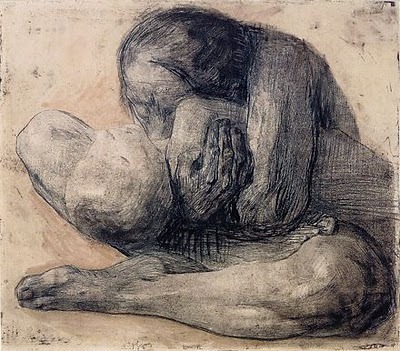 "Woman with Dead Child" by Kathe Kollwitz
"Woman with Dead Child" by Kathe KollwitzA Prayer for Sophie by David J. Leonard | NewBlackMan
Five years ago, on October 2,2006, our family experienced one of life's great joys, the birth of our secondchild, Sophie Nicole Leonard. Wehad spent the months leading up to her birth excitingly waiting for her to joinour family. I can still rememberpainting her room or getting all of the baby stuff ready; the vivid image ofour oldest daughter shouting to her unborn sister "the eggs are coming down andthey taste really good," as my partner ate her breakfast, remains encased in mymind.
Our joy and excitement wouldquickly turn into devastating agony, with our daughter ultimately succumbing toan infection, dying in the early morning of October 3rd. In an instant, we had lost our child, atragedy that was beyond our imagination, even though its occurrence is toocommon throughout the world. Everydetail of that day sits with me: getting dropped off at the hospital; how sickmy wife looked when I entered the room; the sights and sounds when Sophieentered the world. More vivid and painful are the memories of where I wassitting when she went into cardiac arrest, the clothes I was wearing, thehospital smell, and the sounds of "code blue." To this day, I still cannot see a helicopter without thinkingabout the 60+ mile trip I took in the dark, so close to my dying daughter yetunable to help or hold her. Icannot shake these memories nor can I shake those moments alone in a sterileand quiet hospital at 3AM where I obsessively watched the various monitors asevidence of her continued life. Just closing my eyes now, I can still see myself in the waiting room –waiting for things to turn around, waiting for my wife to arrive, waiting forthe pain to stop; waiting . . . waiting, only to see her die in front of us,holding her one time before we drove those 60 long miles home.
While it has been five years,these memories remain strong. Theyremain with me. So does the numberof people who told me, "It's not suppose to happen." While understanding people's efforts to ease our pain bynoting disbelief and shock since it wasn't suppose to happen to "us," the ideathat we (and not others) were suppose to be immune to the tragedy of losing ourdaughter is one that sticks with me. It isn't suppose to happen to anyone, but it happens all too oftenwithin the United States and globally.
For every 1,000 live births, 4.5babies die in the United States. While relatively uncommon in the United States, the U.S. accounts forthe second largest amount of neonatal deaths (that includes child deaths withinthe first 27 days of life) in the industrialized world. Compared to other countries around theworld, the United States ranks with Croatia,United Arab Emirates, and Qatar, and lagsbehind Cuba, Slovakia, all of Western Europe and Scandinavia. The situationis even worse when as we look at racial inequality, especially as we look atthe first year of life. AfricanAmerican children are 2.5 timesmore likely to die before their first birthday than white children. Janell Ross, in "LatinoHealth Paradox: Latinos Boast Low Infant Mortality, Long Lives Despite RiskFactors" describes the predicament in the following way:
Nationally, the white infant mortality ratewas 5.6 per 1,000 births in 2007, the most recent year for which data areavailable. White Americans also have the nation's highest average income andeducation levels, markers usually associated with good health.
Average Latino education and income levelsare closer to those of African Americans. But the difference between the infantmortality rate for most Latinos (Puerto Ricans are the exception) and the blackrate is vast. There were 5.5 per 1,000 Latino infants born in 2007 who diedbefore their first birthday. That same year, 13.3 per 1,000 black children diedin their first year.
Children surviving birth is evenmore precarious throughout the developing world. Each year, three million babies die in the first week oflife, with an additional one million dying by the 27th day. Four million babiesdo not live past their 28th day of life, mostly from preventablediseases and malnutrition. Arecent study found that babies under the age of 1 month account for 41% of allchild death, with over half of those deaths occurring in five countries: Pakistan,Nigeria, China, Congo, and India, where more than 900,000 babies die eachyear. InAfghanistan, 1 out in every 19 babies born die shortly after they enter theworld. Every minute, 7newborn babies die, even though a vast majority could be saved. "Three quartersof the four million newborn babies that die every year could be saved withlow-cost, low-tech care, scientists and health agencies are urging," writesKatherine Davis. "It would require initial investment to provide the extraclinics and midwife training needed to achieve these vast improvements, buteven simple, cheap measures such as health education and tetanus immunisationcould save one million babies each year - 99% of whom live in developingcountries."
As I look at the abysmal numbers,the lost lives, and the pain so many families have experienced, I am at aloss. I can't help but think aboutthose who said it is not supposed to happen to us because of ourprivileges. I can't help but thinkthat their shock reflects a kind of acceptance and ignorance about the issue ofneonatal and child death around the world. I can't help but think that losing a child, whether duringpregnancy, at birth, or any time during life is not supposed to happen to anyof us irrespective of race, class, or nationality. But in reality, race, class, and privilege matter, makingmany families more vulnerable to the pain and suffering than even us.
With all of this on my mind, andwith my thoughts with our Sophie and the many other families who have lostchildren, I continue to move forward with her memory. In her brief life, she taught me so much about love, family,and the importance of moving forward with her to help others. So, to say I love you and to say Happybirthday, I am donating 10.02 (her birthday being 10/02) to Savethe Children so that the number of babies who die throughout the worlddeclines (seehere for details about their efforts to combat neonatal death). I would be honored if you could do thesame, donating 10.02 to pay tribute to the lost lives and the futuresaves.
***
David J. Leonard is AssociateProfessor in the Department of Critical Culture, Gender and Race Studies atWashington State University, Pullman. He is the author of Screens Fade to Black: Contemporary African American Cinema and theforthcoming After Artest: Race and theWar on Hoop (SUNY Press). Leonard is a regular contributor to NewBlackMan and blogs @ No Tsuris.
Published on October 02, 2011 18:38
October 1, 2011
Lizz Wright: NPR Music Tiny Desk Concert
Lizz Wright will be a guest on Left of Black on Monday, October 3, 2011 at 1:30 pm est and will perform live at Duke University's Reynolds Industry Theater on October 7, 2011 at 8:00.
Published on October 01, 2011 11:45
Mark Anthony Neal's Blog
- Mark Anthony Neal's profile
- 30 followers
Mark Anthony Neal isn't a Goodreads Author
(yet),
but they
do have a blog,
so here are some recent posts imported from
their feed.



